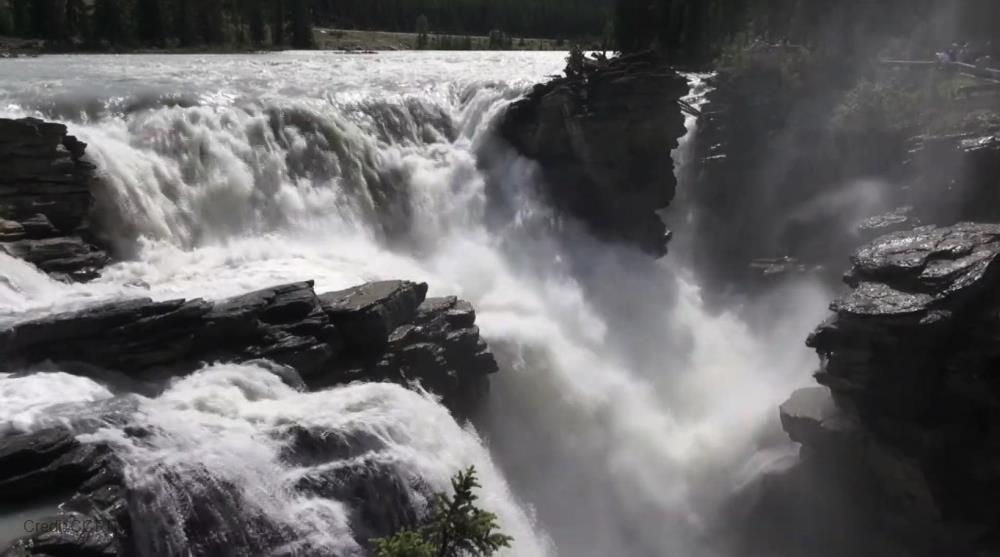
Related items loading ...
Section 1: Publication
Publication Type
Conference Presentation
Authorship
Nehemy Magali F., Maillet Jason, Perron Nia, Pappas Christoforos, Sonnentag Oliver, Baltzer Jennifer L., Laroque Colin P., McDonnell Jeffrey J.
Title
Waking up thirsty: tree water use of snowmelt in a boreal forest
Year
2022
Publication Outlet
AOSM2022
DOI
ISBN
ISSN
Citation
Magali F. Nehemy, Jason Maillet, Nia Perron, Christoforos Pappas, Oliver Sonnentag, Jennifer L. Baltzer, Colin P. Laroque, Jeffrey J. McDonnell (2022). Waking up thirsty: tree water use of snowmelt in a boreal forest. Proceedings of the GWF Annual Open Science Meeting, May 16-18, 2022.
Abstract
Studies of tree water source partitioning have primarily focused on the growing season. However, little is yet known about the source of transpiration before, during, and after snowmelt when trees rehydrate and recommence transpiration in the spring. This study investigates tree water use during spring snowmelt following tree’s winter stem shrinkage. We document the source of transpiration of three boreal forest tree species—Pinus banksiana, Picea mariana, and Larix laricina—by combining observations of weekly isotopic signatures (d18O and d2H) of xylem, soil water, rainfall and snowmelt with measurements of soil moisture dynamics, snow depth and high-resolution temporal measurements of stem radius changes and sap flow. Our data shows that the hydraulic onset of stem rehydration and transpiration overlaps with snowmelt for evergreens. During rehydration and transpiration onset, the water in the xylem (d18O and d2H) reflected a constant pre-melt isotopic signature likely reflecting late fall conditions. As snowmelt infiltrates the soil and recharges the soil matrix, soil water shows a rapid isotopic shift to depleted-snowmelt water values. While there was an overlap between snowmelt and transpiration timing, xylem and soil water isotopic values did not overlap during transpiration onset. Our data showed 1 to 2-week delay in the shift in xylem water from pre-melt to clear snowmelt-depleted water signatures. This delay appears to be controlled by tree water transit time that was in the order of 9 to 18 days. Our study shows that snowmelt is a key source for stem rehydration and transpiration in the boreal forest during spring onset.
Plain Language Summary
This research provide new insight into forest water use and in the boreal forest and how changes in water availability through snowmelt might impact forest water use, growth and water availability downstream. This aligns with GWF goals because provide a better understanding about boreal forests functioning and how it might change under climate warming, increasing chances to predict forest responses.
Section 2: Additional Information
Program Affiliations
Project Affiliations
Submitters
|
Magali Furlan Nehemy | Submitter/Presenter | magali.nehemy@usask.ca | University of Saskatchewan |
Publication Stage
N/A
Theme
Hydrology and Terrestrial Ecosystems
Presentation Format
10-minute oral presentation
Additional Information
AOSM2022 First Author: Magali F. Nehemy, University of Saskatchewan Additional Authors: Jason Maillet, The University of Winnipeg; Nia Perron, Université de Montréal; Christoforos Pappas, Université de Montréal; Oliver Sonnentag, Université de Montréal; Jennifer L. Baltzer, Wilfrid Laurier University; Colin P. Laroque, University of Saskatchewan; Jeffrey J. McDonnell, University of Saskatchewan


 GWFNet
GWFNet Master
Master Data
Data Research
Research Map
Map
 Advanced
Advanced . . .
. . .

 Metadata Editor
Metadata Editor
 Record List
Record List
 Alias List Editor
Alias List Editor
 Legacy sites
Legacy sites